Why the CFMEU and Victorian leader John Setka have confidence chanting: ‘Workers united will never be defeated’
The CFMEU was born of tough unions that fought for everything from the eight-hour day to ending the infamous wharf bull system but under firebrand leader John Setka in Victoria, its power has reached new heights.
Born of unions that fought for everything from the eight-hour day to the end of the infamous “dog collar act” and “bull system” on Australia’s wharves, the CFMEU we know today has confidence in chanting “workers united, will never be defeated”.
Its members have spilt blood over the years in battles for better worker conditions, and rarely backed down from fights.
Combining three divisions — construction and general, manufacturing and maritime — the militant and effective Construction, Forestry, Mining and Energy Union of today has its roots in hard union men (and later women) that fought for causes from the withdrawal of troops from Vietnam and Aboriginal rights to the end of apartheid in South Africa and nuclear disarmament.
Through the years the union has gathered power, influencing governments and forcing change with shows of strength, numbers, perseverance, political alliances and relationships, and court challenges.
With offices now in every capital city and many regional centres — and the might of more than 115,000 members and 330 full time staff and officials across Australia — the union has the wins on the board to be able to confidently claim: “If you want to be a member of a union that sticks up for workers and isn’t afraid to take action, you need to be a member of the CFMEU.”
But many say the Victorian branch of the powerhouse union — representing 30,000 construction workers and with its firebrand and controversial leader John Setka — takes that “action” to new and at times frightening levels.
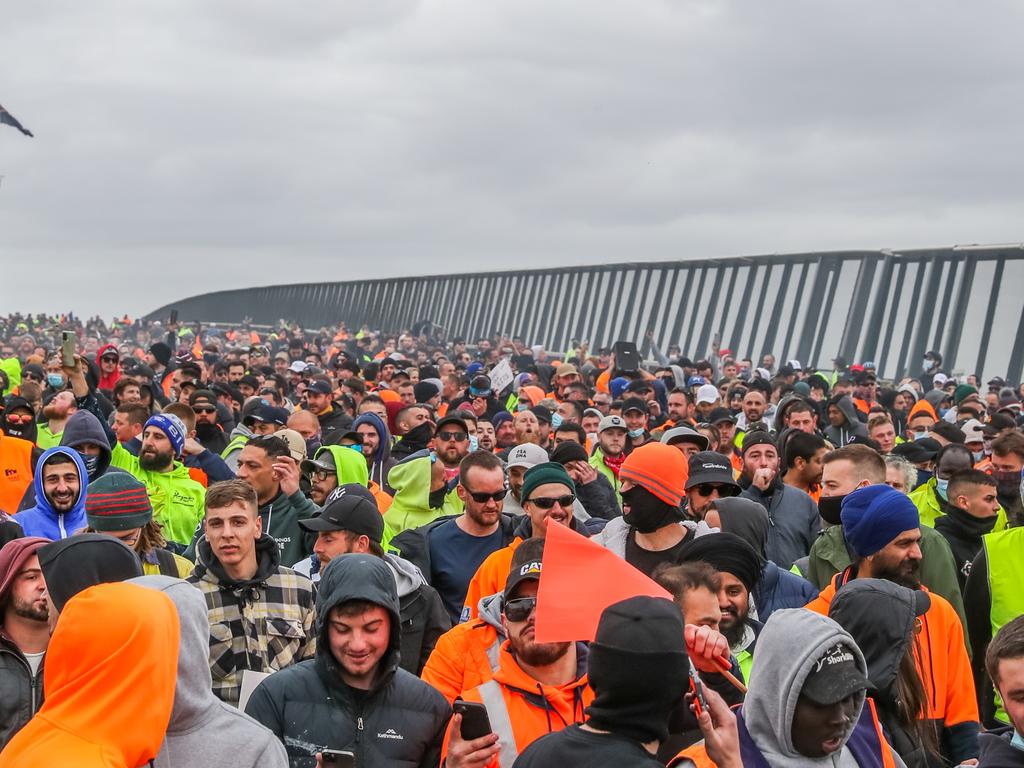
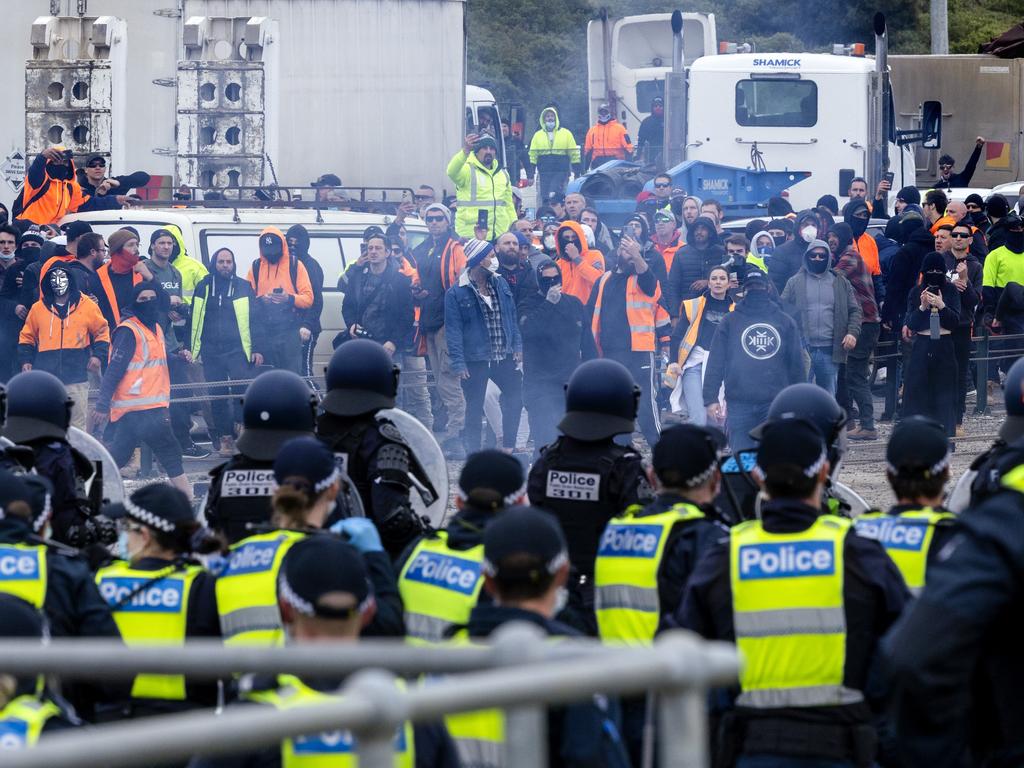
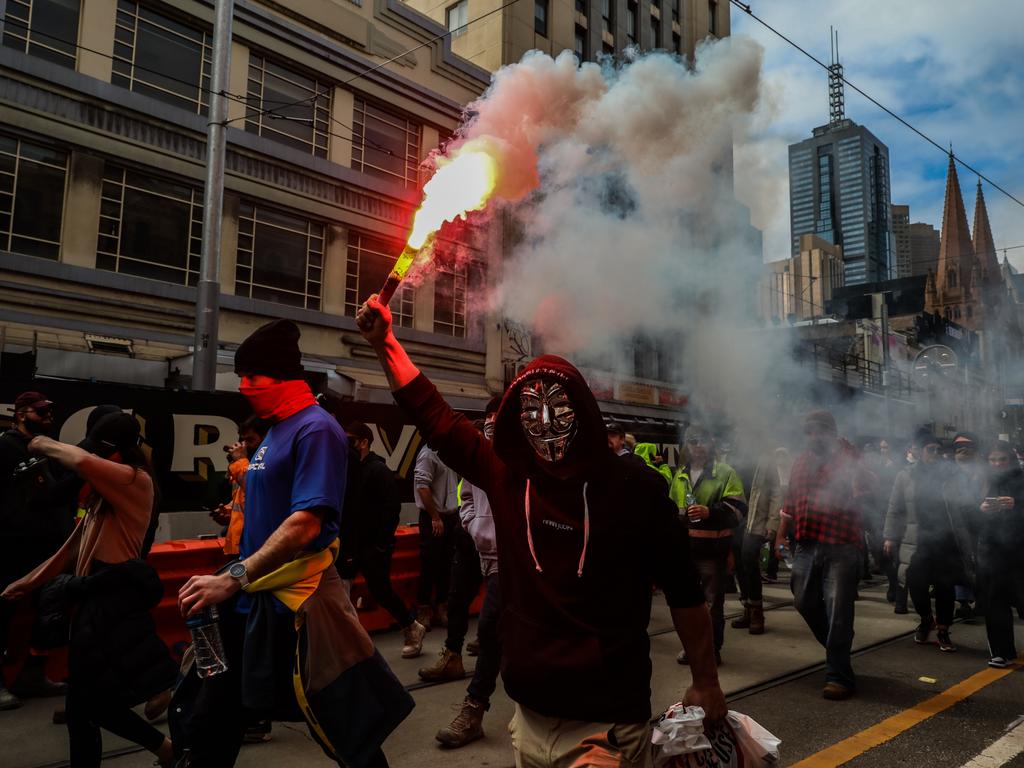
It was on show during the union’s protests against Grocon in the Emporium dispute, that shut down Melbourne’s CBD.
During Covid the union also railed against mandatory vaccinations and lockdowns.
But union Covid protests planned for Melbourne’s West Gate Bridge and city streets took an ugly turn when other protesters clashed police and union bosses in front of their city headquarters.
Meanwhile, scores of worker entitlements have been won for Victoria’s construction workers on union sites, including restrictions on working in the rain and heat and huge penalty payments for working on public holidays and overtime.
Critics say Setka, who claims he will retire as secretary this year, is the dominant factor in everything.
“It’s all about him,” one said.
Several years ago the CFMEU in Victoria started to sell black hoodies and other merchandise emblazoned with a phrase coined by state secretary, Setka.
“God Forgives, the CFMEU doesn’t,” the merchandise screams in capital letters.
In recent years, Labor and union figures say, this unofficial motto has taken on new meaning as the CFMEU embarked on a campaign to boost its industrial might and settle old scores.
This has led to a takeover of the Big Build where the union dictates which companies get work as suppliers, and threatens to spill over into councils where it wants to poach blue collar workers from the Australian Services Union.
While the CFMEU has a national body, its power in Victoria comes from the construction division, which provides a war chest of cash for campaigns and donations to the ALP, which run into the millions of dollars between elections.
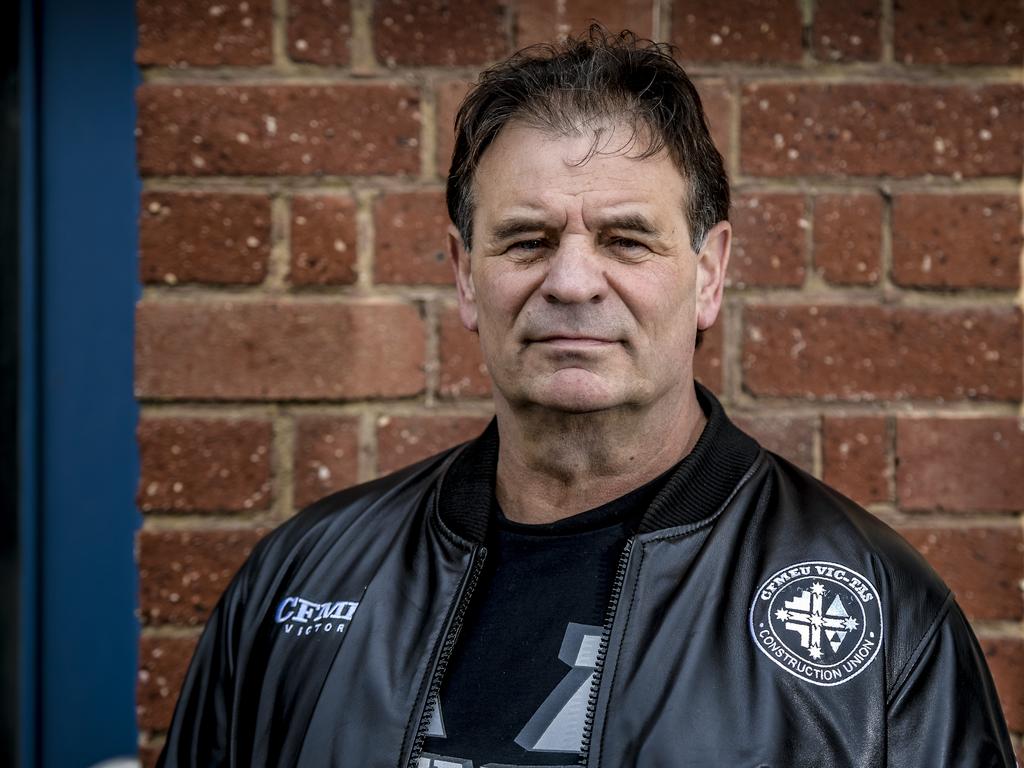
Its base also provides industrial might on the ground at work sites, with Setka recently reminding people of what the union is willing to do to get its way on site during a podcast interview with former AFL champion Sam Newman.
“If you have got bad laws, it’s your obligation to sort of break them,” he said.
The power of the CFMEU in Victoria is largely due to Setka and his allies, who took the union reins in 2012.
The combative leader cut his teeth at the infamous Builders Labourers Federation, which was deregistered by Labor leaders Bob Hawke and John Cain, under the guidance of militant unionist John Cummins — a legend of the movement who was credited with helping secure a 36-hour week and was jailed multiple times.
Of Croatian heritage, Setka’s late father Bob survived the West Gate Bridge collapse, which would become a major driver in his career.
CITY BLOCKADES, ROYAL COMMISSIONS
When Setka was elected state secretary of the CFMEU in 2012, the union was in the midst of a war with construction giant Grocon that shut down central Melbourne.
The blockade of sites including the Myer Emporium project cost the union millions, but showed its willingness to flex industrial muscle that was a hallmark of Setka and his former right hand man, Shaun Reardon.
The pair would later be charged with blackmail relating to the supply of concrete to Grocon sites, before prosecutors sensationally withdrew the charges.
Allegations had stemmed from a Royal Commission into Trade Unions ordered by former prime minister Tony Abbott — who Setka once tried to sue for calling him a thug.
The union leaders were arrested in front of family, which was described by national secretary Dave Noonan as “overkill” and enraged Setka.
DEALS FOR POLITICAL POWER
After years in the political wilderness, the CFMEU under Setka tried to regain some extra clout within the ALP.
Reardon was dispatched to rejoin the party’s Socialist Left faction — the same as then-opposition leader, Daniel Andrews.
While it lacked numbers in caucus, it was nevertheless able to get a seat at the policy table and started to push its agenda in the halls of parliament.
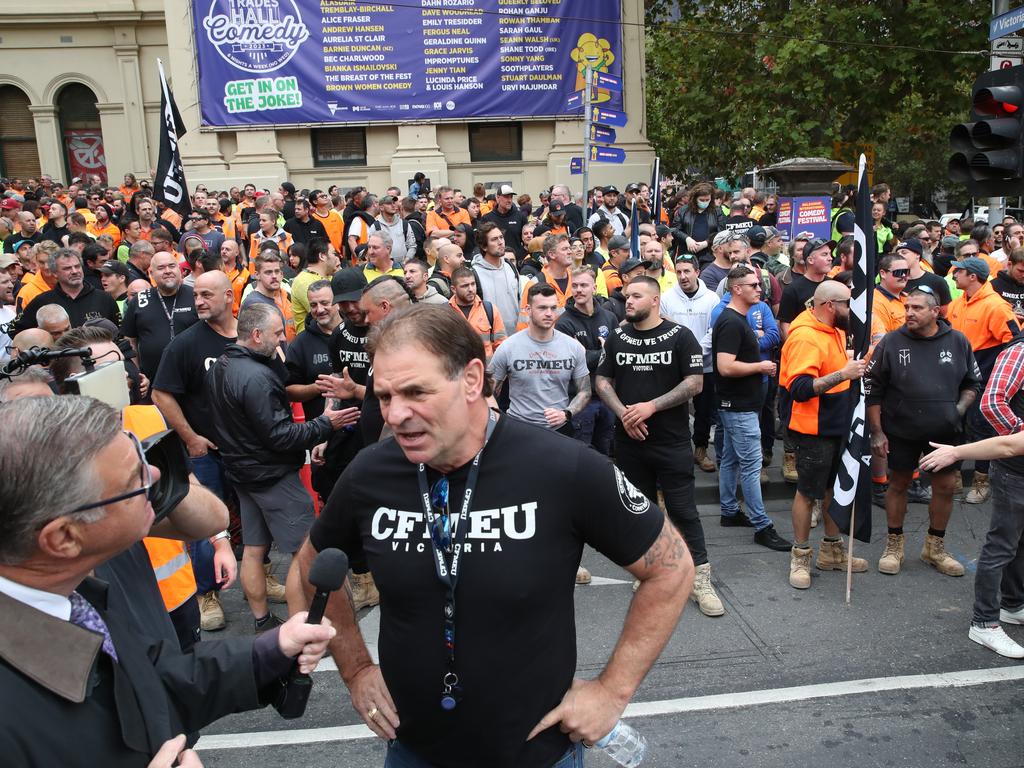

This blew up when one of its allied MPs, the late Jane Garrett, was targeted by the state’s firefighters union and lost a preselection battle due to deals within the left wing faction.
It then joined the so-called Industrial Left that created a factional alignment with right wing MPs led by former powerbroker Adem Somyurek, which used its numbers in parliament to influence Labor preselections.
Union figures say the CFMEU has little influence today, because it has limited numbers at the ALP’s state conference and no sway on the ALP Public Office Selection Committee.
They say this could change if its plan to drive up membership numbers and poach rival unions’ members continues unabated.
PUBLIC ENEMY NUMBER ONE
In 2019, Setka’s personal life burst into the public domain when he was convicted of harassing his wife via text message.
Around that time, he was also accused of undermining the work of family violence campaign Rosie Batty — which he continues to deny.
Union and political leaders — including current prime minister Anthony Albanese — called for him to resign from the union as they moved to expel him from the ALP.
Some of those who called for his head included Australian Council of Trade Unions secretary Sally McManus and female union bosses including the ASU’s Lisa Darmanin.

Most of the CFMEU stuck by Setka, but Reardon quit the union saying his decision was driven by “personal values”.
This triggered a reshuffle at the union executive, which now includes renowned enforcers Mick Myles and Joe Myles.
Union and Labor figures say the hatred for those who called him out continues to drive Setka, pointing to the CFMEU’s recent attempt to poach council worker members from the ASU.
They say the only reason Albanese is no longer a target is because he dumped a construction industry watchdog and introduced law changes that favour the union.
WATCHDOG EUTHANISED
Former prime minister Kevin Rudd was once labelled a “f***ing dog” by Setka at a national Labor conference due to the fact he never ditched the Australian Building and Construction Commission.
In 2022, Albanese promised to do what Rudd did not.
With Labor a short-priced favourite to win the 2022 federal election, the construction industry noticed a marked shift in behaviour from the CFMEU as it hedged its bets on the watchdog being muzzled.
A suite of other industrial relations law changes have also shifted the dial towards workers, Setka recently said, and has seemingly paused his war on Albo.
Construction industry insiders say while the ABCC was by no means perfect, it had restrained the union due to its ability to dish out huge fines.
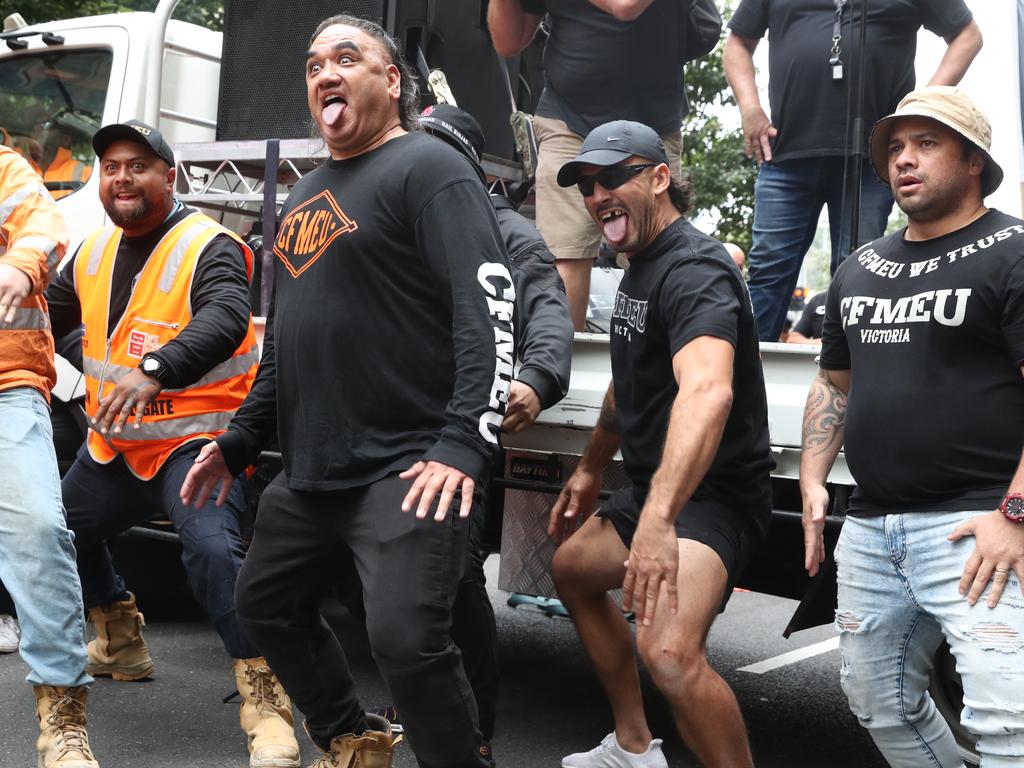
Since the abolition of the watchdog, the CFMEU has taken over the Big Build in Victoria through intimidation and coercion, and is now able to dictate which suppliers get work on public-funded projects.
Some ALP figures question whether the union is now biting off more than it can chew, but say there is little chance of much changing in the short term.
The CFMEU, after all, has a long history of getting what it wants.
BORN OF BLOOD AND BITTER BATTLES: HISTORY OF THE CFMEU
Power and struggle on the docks
The history of today’s national CFMEU is “both exceedingly rich and complex”, the union notes on its own website, adding the monster we now know is “an amalgamation of a great many unions, each with their own proud history”.
In Australia, campaigns have perhaps nowhere been more hard fought than on the nation’s wharves.
Through time, the maritime workers community has opposed conscription — a campaign that would eventually lead to the eviction from the union of then Prime Minister Billy Hughes — and raged against the infamous ‘dog collar act’, championed at the time by Prime Minister Stanley Bruce, that forced wharfies to hold a special license to work, costing a hard-earned shilling a year.
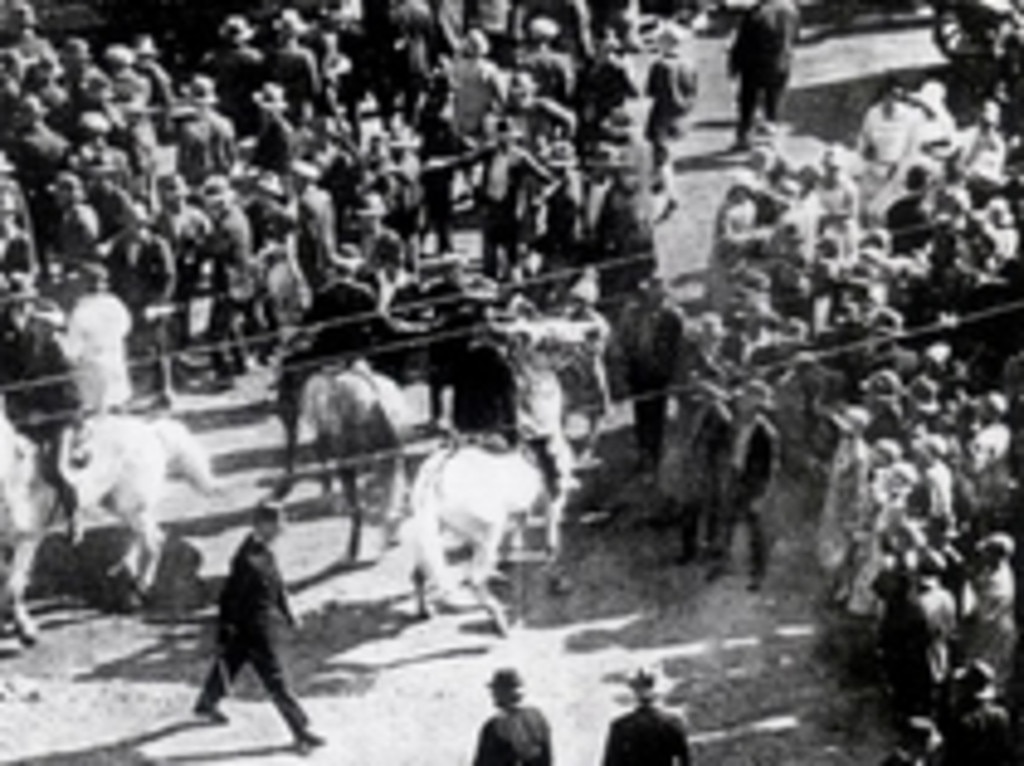
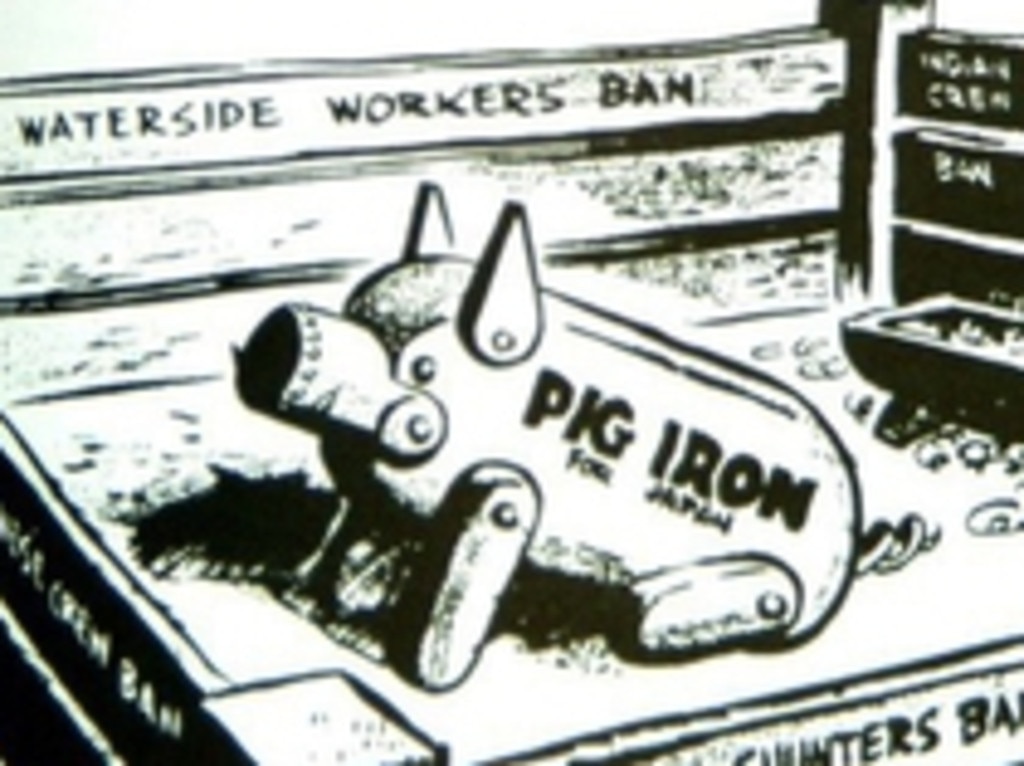
Mass strikes across the country in November 1928 — just before the onset the Great Depression — led to the death of a Gallipoli veteran, wharfie and staunch union man, Allan Whittaker, who was shot by police in the back of the neck at Princes Pier in Port Melbourne, and later died.
Whittaker’s death sparked outrage and Stanely Bruce was defeated at the next election, in 1929.
The Second World War meanwhile was the catalyst for the end of the inequitable ‘bull system’ that operated on Melbourne’s wharves, whereby the largest men — the bulls — were chosen first for work and more slightly-built men passed over.
It was replaced with the far more equitable gang system, based on rotation and rostered groups, and remains to this day.
Maritime workers also played acentral role in opposition to the Vietnam War — in 1967 refusing to crew the Boonaroo, which was carrying barbed wire and ordnance to Vietnam.
The protest action led to a song that included the chorus, “Oh, who will man the Boonaroo? Who will sail her, be the crew, sailing on the Boonaroo?”
Then, in September 1967, 2,600 Sydney union members refused to work on the Jesparit, which was also headed for Vietnam. They again refused in 1969, forcing the government to recommission the ship as a naval vessel.
In 1998 a fierce 80-day dispute flared after Patrick Stevedores — under chief Chris Corrigan — had set into action the boldest workplace upheaval in living memory — 1400 workers, members of the Maritime Union of Australia, were sacked.
They were locked out of port sites and replaced by non-union workers trained secretly in Dubai.
The union picketed and the Howard government backed Corrigan.
The ensuing standoff gave rise to one of the most significant industrial reforms in Australia’s history.
Union workers, their friends and supporters formed picket lines, the biggest of which was at Melbourne’s Webb Dock.
The picket was manned day and night for weeks with a village of sausage sizzles, live music and kids in MUA garb, chanting the now famous cry, “MUA, here to stay” and “workers united will never be defeated”.
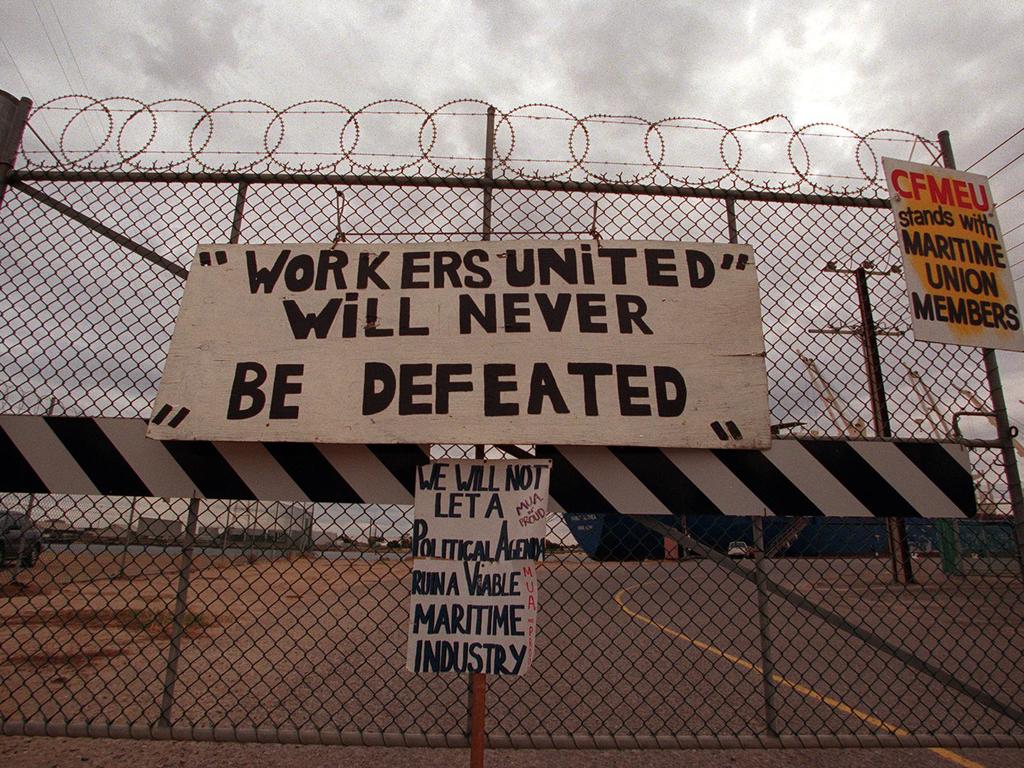
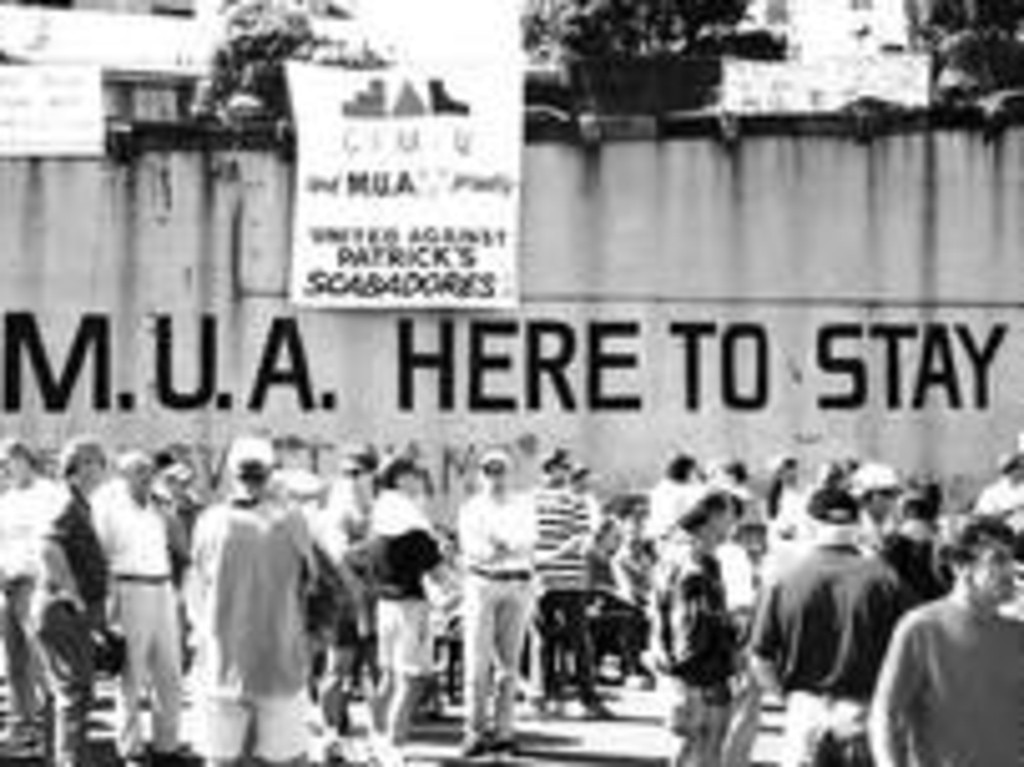

Patrick struggled to bus in new workers and trucks of shipping containers as MUA supporters linked arms and clashed with police.
Images of children crying as officers dragged protesters from the line were broadcast around the country.
But still the company, and then Workplace Relations Minister Peter Reith, didn’t budge.
As the picket carried on, court action started against Patrick to try and reverse the sacking.
The case went before the Federal Court where it was found the company intentionally rearranged its business arms to dismiss its workforce.
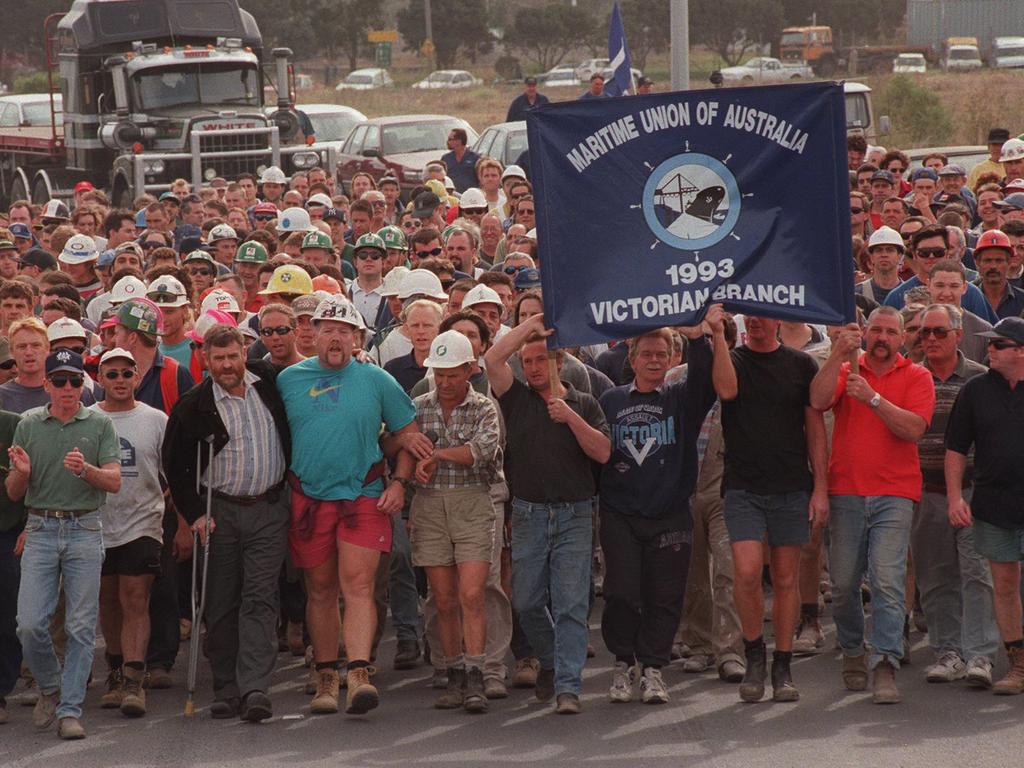
There were also concerns the company sacked the workers for being members of the MUA.
When the court ruled in the union’s favour, there was jubilation at the picket line.
The decision led to a new agreement between the company and the MUA involving many voluntary redundancies, changes to rostering, casualisation and productivity targets.
Although the union won in court, the outcome was nothing short of radical workplace reform on the waterfront that saw many objectives of the Howard government ultimately achieved, and the course of industrial relations in Australia changed forever.
Manufacturing
The CFMEU Manufacturing Division has members in industries as diverse as textiles, clothing, footwear, manufacturing, forestry, furnishing, building products and pulp and paper.
Made up of four unions that have history of fighting for their members — the Australian Timber Workers Union, Federated Furnishing Trades Society, Pulp and Paper Workers’ Federation and Federated Engine Drivers and Firemens’ Association — the national CFMEU’s Manufacturing Division was first registered as a federal organisation in August 1907, as the Federated Sawmill, Timber-yard and Woodworkers Employees Association of Australasia.
The name of the union was changed in October 1913 to the Amalgamated Timber Workers Union of Australia, and again in July 1918 to the Australian Timber Workers Union.
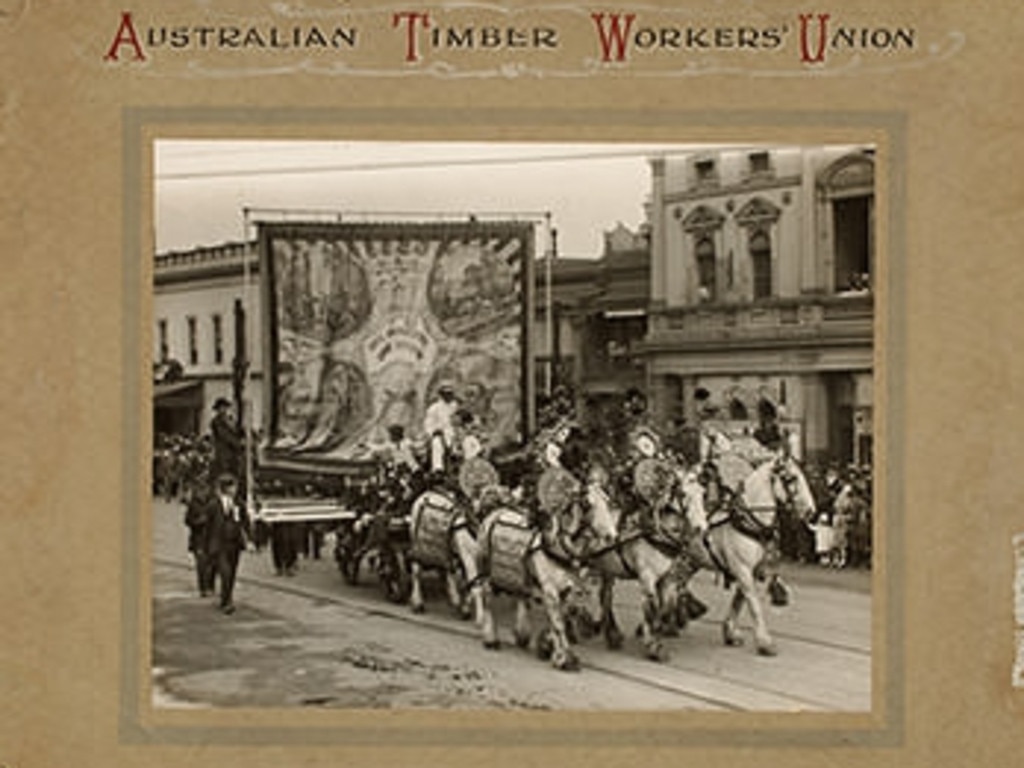
In late 1990 a ballot was conducted by members of the Australian Timber Workers Union and the Pulp and Paper Workers Federation endorsing the amalgamation of both unions to form the Australian Timber and Allied Industries Union.
A further ballot was conducted in mid 1991 on the amalgamation between the Australian Timber and Allied Industries Union and the Building Workers’ Industrial Union — supporting the first stage in the development of a major union, the Construction, Forestry, Mining and Energy Union.
But the history of the CFMEU Manufacturing Division dates as far back as the landmark 1870s campaign for an eight-hour working day, where it was at the forefront of the fight.
Another — at times violent — campaign was launched in the 1920s, when it was sought to reduce the 48-hour week of sawmillers in metropolitan areas to 44 in the forest and forest products industry.
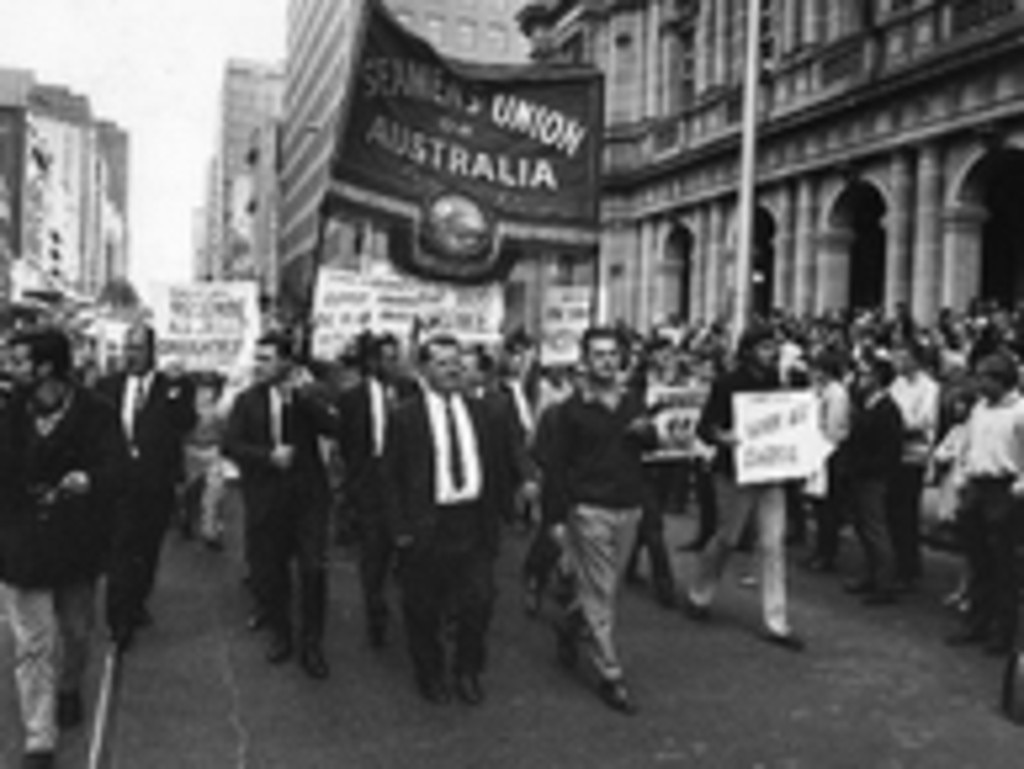
More recently, in 2007the Forestry and Furnishing Division campaigned against the Howard government’s WorkChoices agendawith door knocking and protests.
“Throughout 2007-18 the Manufacturing Division has run and won a variety of campaigns against decisions taken by large corporations and state and federal governments that threatened Australian jobs,” it notes on its website.
“Fighting for our members’ jobs and improving wages and conditions remains the union’s number one priority.”
The Textile Clothing Footwear Union amalgamated with the Manufacturing Division in 2018.
WHO’S WHO IN THE CFMEU:
Paddy Crumlin – national president
Christy Cain – national secretary
Zach Smith – national assistant secretary
Victoria-Tasmania branch
John Setka – Victorian state secretary
Robert Graauwmans – branch president
Joe Myles – branch senior vice-president
Elias Spernovasilis – branch assistant secretary
Mick Myles - branch assistant secretary
Derek Christopher – branch assistant secretary
Originally published as Why the CFMEU and Victorian leader John Setka have confidence chanting: ‘Workers united will never be defeated’



